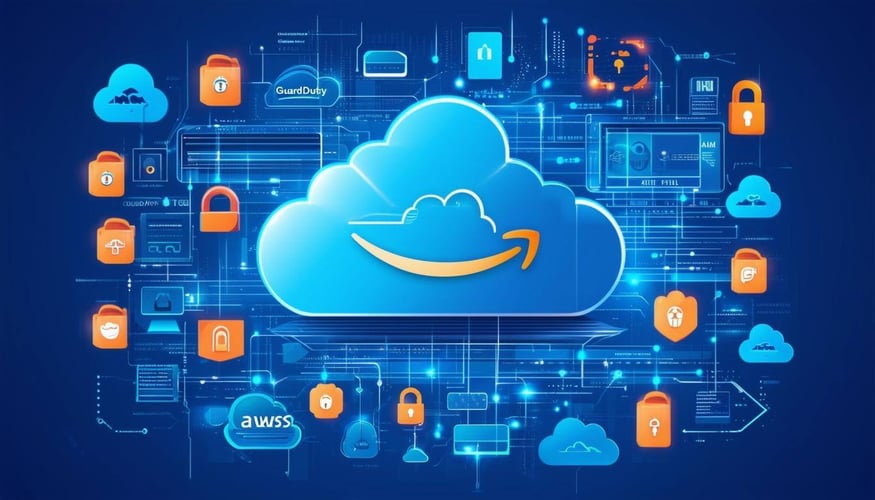AWS Security Hub is core to a secure AWS environment—in one place, it brings together security insights from multiple AWS services. This allows for the following: consolidating security findings, automating compliance checks, and providing clear and unified visibility into security alerts. Through data aggregation from different sources, it can prioritize and triage security issues quickly to respond to potential threats. Compliance with industry standards and regulations for improved security and adherence to the required security protocols are also supported.
Why do we need AWS Security Hub?
AWS Security Hub is an important tool for organizations utilizing Amazon Web Services (AWS), as it meets several key security and compliance needs:
- A centralized platform within which to aggregate and correlate security alerts and findings originating from different AWS services and third-party tools.
- Security Hub makes threat detection and vulnerability easier through security findings aggregation and automation of compliance checks. Security Hub provides a centralized platform to aggregate and correlate security alerts and findings from various AWS services and third-party tools.
- By aggregating security findings and automating compliance checks, Security Hub helps in the efficient detection of security threats and vulnerabilities.
- Compliance monitoring is simplified by the fact that the applications check on the industry standards and regulatory requirement compliance on their own.
- Security Hub prioritizes security alerts by severity and impact level.
- It has very good integration with many AWS services and third-party security tools, making source aggregation for security findings easier.
- AWS Security Hub scales in line with the growth of the AWS infrastructure an organization builds out.
- Security Hub has a role in rationalizing incident response since it provides a place where all security-related findings are kept.
Risks involved if we do not enable AWS Security Hub
Not enabling AWS Security Hub can result in reduced security visibility, operational inefficiencies, compliance challenges, and increased security risks which include:
- Without AWS Security Hub, this type of organization does not have a centralized view into security alerts and findings across multiple AWS services and third-party tools.
- The lack of a security hub results in no centralized aggregation of security alerts and findings.
- AWS Security Hub automates compliance checks against industry standards and regulations, ensuring adherence to security requirements.
- Organizations without Security Hub may struggle with manual prioritization of security alerts.
- Security Hub aggregates findings from multiple AWS services and provides a centralized platform for security monitoring.
- The absence of AWS Security Hub may lead to inefficiencies in incident response, compliance reporting, and security management.
- Overall, the lack of a centralized security hub increases the organization's exposure to security risks.
Prerequisites in setting up AWS Security Hub
To set up AWS Security Hub we would need the following AWS Services:
- AWS Config: AWS Config is an Amazon Web Services-hosted service that enables the assessment of resource configuration, allowing for configuration change audit and management. It keeps track of all changes that arise in a configuration as time lapses, and in that manner, an individual is kept up to date in terms of the history of the different resources, tracks the configuration deviation, measures general compliance with the rules versus standards set, and formulated rules. Refer to AWS Config.
- AWS Security Hub: Amazon Web Services offers an all-inclusive security service that is designed to provide a central place through which users can monitor and manage the security alerts and compliance status of their AWS accounts. This service consolidates security findings and alerts from multiple AWS services, from third-party tools, and from custom applications to offer a single pane of glass about security insights. For more information please refer to AWS Security Hub.
Procedure for setting Up AWS Security Hub for proactive security
To set up the alerting system, this comprehensive procedure will guide you through the following essential steps which are :
- Enabling AWS Config
- Enabling AWS Security Hub
Enabling AWS Config
To Enable AWS Config
- Open the AWS Management Console and select Config.
- Click on the 1-click setup.
- Now after you will get on to the next screen, click on confirm
Enabling AWS Security Hub
AWS Security Hub enhances security monitoring and incident response by providing actionable insights to secure AWS resources effectively.
To Enable AWS Security Hub
- Open AWS Management Console and search AWS Security Hub.
- Click on Go to Security Hub
- Select the Security Standards that you want to apply and click on Enable Security Hub
- After clicking on Enable AWS Security Hub you will see this screen:
Now after the complete setup of AWS Config and AWS Security Hub, you have a comprehensive view of your high-priority security alerts and compliance status across AWS accounts.
Conclusion
Setting up AWS Config and AWS Security Hub is like building a strong security foundation for your AWS environment. AWS Config keeps an eye on your resource configurations, tracks changes, and checks if everything follows the rules. On the other hand, AWS Security Hub is like a control center that gathers and sorts security alerts, making it easier to spot potential issues and follow the security rules. Together, they enable organizations to proactively manage risks, stay ahead of security attacks, and remain assured that requisite security mandates are being compliantly met. By taking advantage of these services, companies can effectively navigate through a dynamically changing cloud security setting and secure digital assets, upholding a security promise.


.png?height=500&name=Identity%20Access%20Management%20(1365%20x%20768%20px).png)

